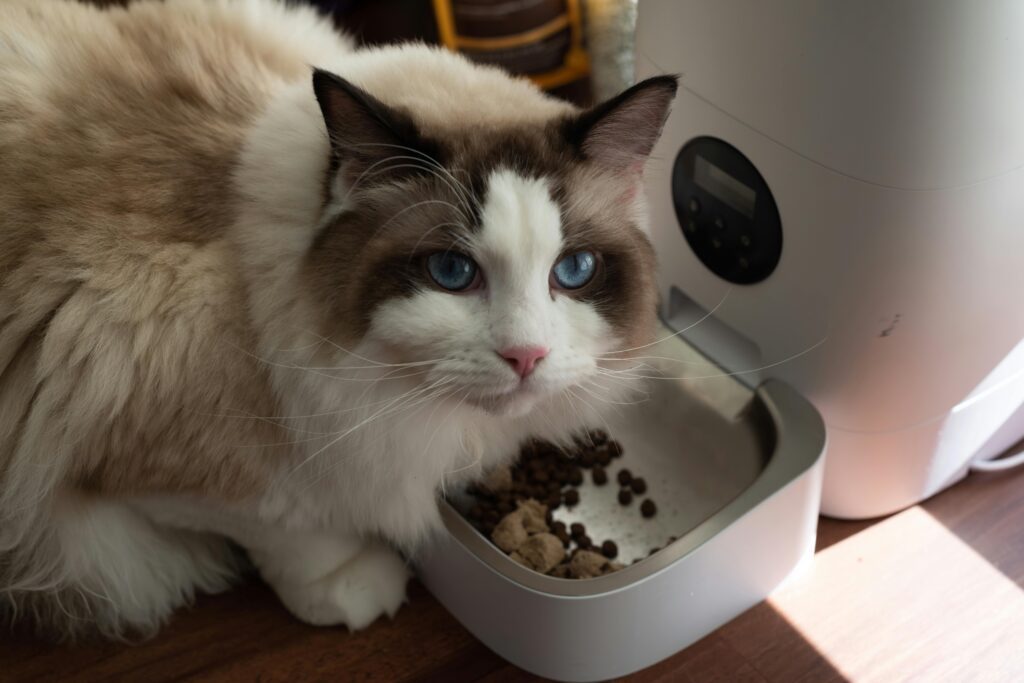Bringing home a cat for the first time opens the door to a world of comfort, companionship, and quiet joy. And you’re not alone. More adults are choosing to welcome a cat into their home and finding that this stage of life may be the perfect time for it. As people settle into slower routines, emptier nests, or new chapters after retirement, many are discovering how rewarding feline companionship can be.
According to the American Pet Products Association, over 32 million adults share their lives with at least one cat. The appeal is simple: cats offer love without high maintenance, companionship without being overwhelming, and just the right balance of independence and affection.
“I waited until I was 62 to adopt a cat,” says Mary from Wisconsin. “I thought I was too late to be a pet owner. Turns out I was right on time.”
Companionship, Without the Cling
Unlike dogs, cats don’t require daily walks or constant attention. They’re happiest when their world is calm, their meals arrive on time, their litter box is clean, and they have a comfortable place to nap. Still, they form deep bonds with their humans. You may find your cat greeting you in the morning, curling up on your lap while you watch TV, or waiting for a daily play session. As Tom, 70, puts it, “My cat’s my shadow now. She follows me from the kitchen to the living room but still respects my space.”
Grooming Becomes a Relaxing Ritual
Grooming quickly becomes a calming ritual for both of you. While cats handle much of their own grooming, brushing a few times a week helps reduce shedding and hairballs while creating a peaceful bonding time. Studies from the Human-Animal Bond Research Institute show that many owners experience relaxation and lower stress while brushing or petting their cat. A soft brush or glove-style grooming mitt works well, even for cats who are still adjusting to new surroundings

Feeding Your Cat
Feeding your cat is one of the easiest ways to create routine and build trust. Most adult cats do well with two small meals a day, served at regular times. Cats thrive on consistency, and sticking to a schedule helps prevent overeating and keeps their digestion healthy. Choose a high-quality, age-appropriate food, and always provide fresh water nearby. For many first-time owners, feeding time also becomes a small but meaningful part of the daily rhythm, where your cat will greet you with excitement and affection, knowing it’s their special moment with you.
Grooming Becomes a Relaxing Ritual
Grooming quickly becomes a calming ritual for both of you. While cats handle much of their own grooming, brushing a few times a week helps reduce shedding and hairballs while creating a peaceful bonding time. Studies from the Human-Animal Bond Research Institute show that many owners experience relaxation and lower stress while brushing or petting their cat. A soft brush or glove-style grooming mitt works well, even for cats who are still adjusting to new surroundings.
The Litter Box Quickly Becomes Routine
The litter box is often a worry for new cat owners, but with a simple setup, it easily becomes part of your routine. Clumping, unscented litter works best, with daily scooping and weekly full cleanings keeping things fresh. Choosing a quiet, easy-to-access spot for the box makes a big difference. In smaller spaces, enclosed litter boxes can help control odor and keep things tidy.
Playtime Is Important at Any Age
Playtime matters, no matter your cat’s age. Simple toys like feather wands, laser pointers, catnip mice, or puzzle feeders keep cats mentally sharp and physically active. Research from The Ohio State University College of Veterinary Medicine shows that just ten minutes of play each day can help improve your cat’s mood and prevent unwanted behaviors.
A Few Home Adjustments Keep Things Safe
You may also find yourself making a few small changes around the house. Scratching posts can help protect your furniture. Some houseplants, like lilies, aloe, and philodendron, should be replaced with cat-safe options. Dangling cords and open flames should be kept out of reach. And a sunny windowsill with a soft cushion can quickly become your cat’s favorite spot in the house.

The Emotional Benefits Are Real
Beyond the daily routine, the emotional rewards of cat ownership are real. Studies from the Mayo Clinic and National Institutes of Health have shown that cat owners often experience lower blood pressure, less depression, a stronger sense of daily structure, and greater purpose. For many adults, especially those who live alone or are navigating new life stages, the steady companionship of a cat brings quiet comfort.
Every Cat Has a Unique Personality
Each cat brings its own unique personality. Some are outgoing from the start; others need time to warm up. Be patient, stay consistent, and speak softly, cats respond to your tone and presence. “It felt like she was testing me at first,” says Ruth, 66. “But after a month, she trusted me completely. Now we’re inseparable.”
You’re Right On Time
Owning a cat at this stage of life isn’t about filling space. It’s about adding something meaningful, a steady, comforting relationship that grows day by day. You’ll learn each other’s rhythms, and before long, you’ll wonder how you ever lived without them.
ZestYears Tip:
Check your local shelters. Older cats often make wonderful companions. Many are already house-trained, calmer, and ready to settle into a new home with someone who’ll care for them.
About the Author
Written by the ZestYears Editorial Team
Sources:
American Pet Products Association
Human-Animal Bond Research Institute
Ohio State University College of Veterinary Medicine
Mayo Clinic
National Institutes of Health




